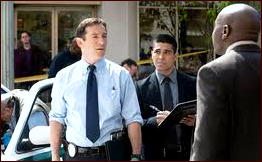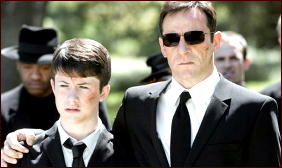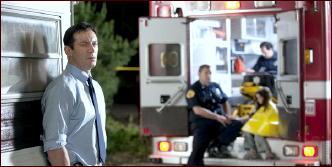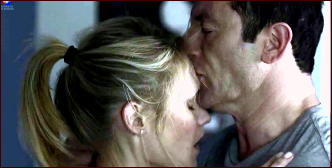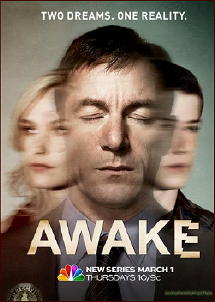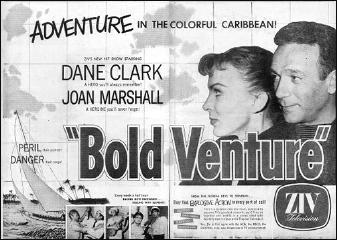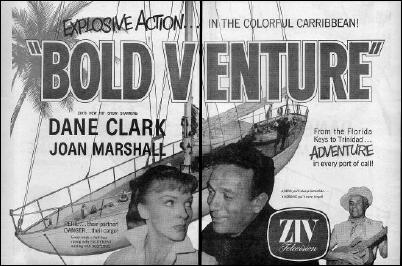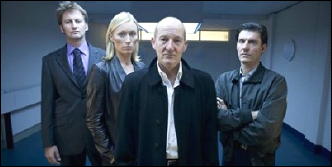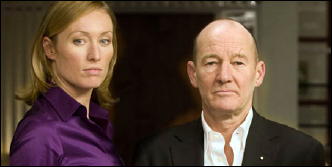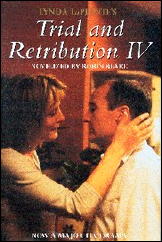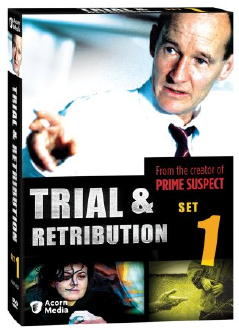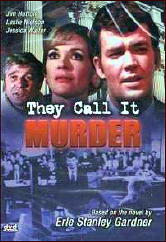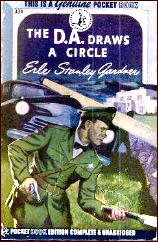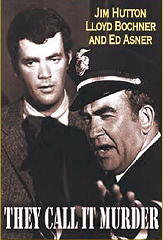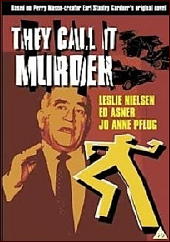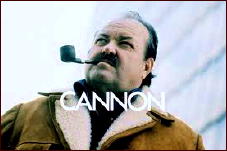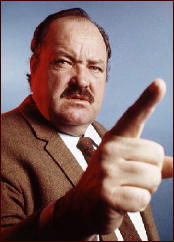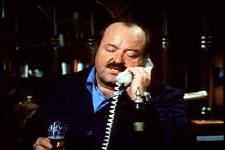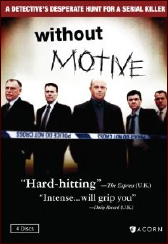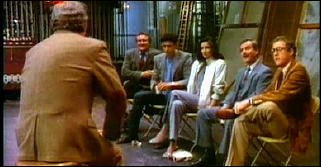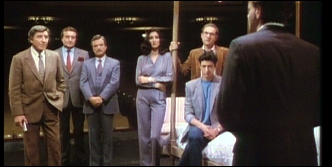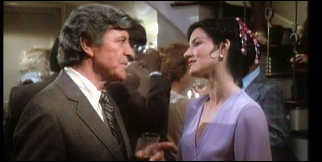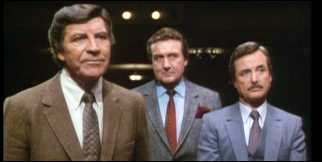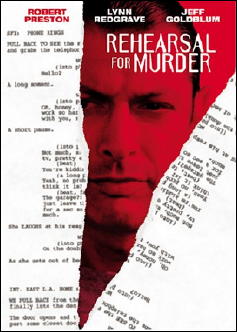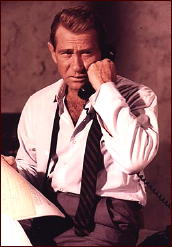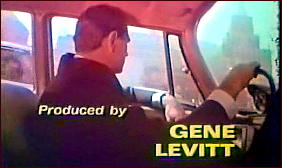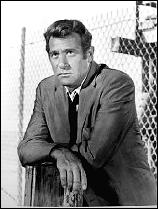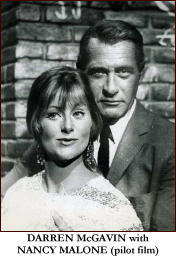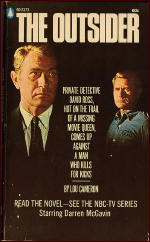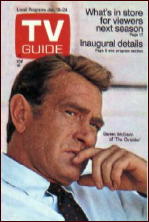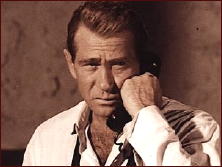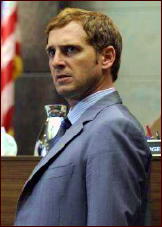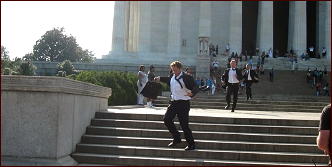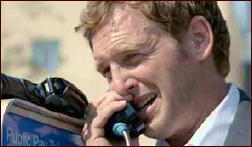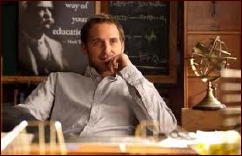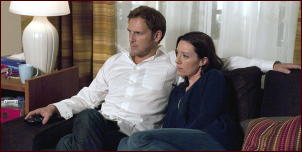A TV Series Review by Michael Shonk
BOLD VENTURE – Syndicated, 1958-1959. 39 episodes at 30 minutes each. Ziv Television Production. Cast: Dane Clark as Slate Shannon, Joan Marshall as Sailor Duval, Bernie Gozier as King Moses. Written and produced (*) by David Friedkin and Mort Fine. (*-except when Friedkin directed then Fine got solo Producer credit).
For my earlier review of the Bold Venture radio series, go here.
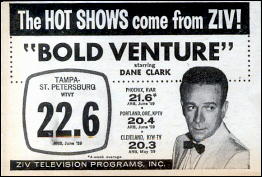
While most believe the television series began in 1959, it was more likely November 1958. According to Broadcasting (November 17, 1958), Bold Venture had been sold in 58 markets (including Chicago) in the first ten days of its release. The copyright dates for the episodes I have seen were from 1958 or 1959.
TV’s Bold Venture, as the radio series, told the story of Slate Shannon and his ward Sailor Duval. But there were major differences. The action moved from Havana Cuba to Port of Spain Trinidad, where Slate owned the hotel “Shannon’s Place†and used his boat “Bold Venture†for odd jobs. The series changed from the radio show of mystery and intrigue to a typical TV crime show.
David Rose was not involved with the TV series and the clever weekly songs King Moses sang in the radio series virtually vanished from the TV series. The theme changed from the radio’s basic adventure show theme to the TV’s theme featuring calypso drummers.
With TV-Film still in its crude stages, and budgets allowing little for music, sets and locations, Bold Venture had that cheap look and soundtrack common with 50’s syndicated Ziv Productions.
Dane Clark is best known for his supporting roles in WWII films such as Action in the North Atlantic (with Bogart). In the fifties he starred in a series of short-lived TV series, Crime & Peter Chambers, Justice and Wire Service. He was later also a regular in The New Adventures of Perry Mason.
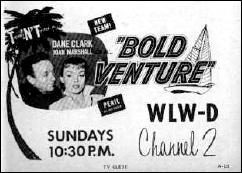
Clark lacked the charm and talent of Bogart who had made Slate a good man in love with a much too young woman. Clark turned Slate into an unlikeable, self-centered, womanizing jerk, who was often heartlessly cruel to Sailor.
Joan Marshall began her career as an underage chorus girl in Chicago. While Bold Venture was her only regular cast role in a series, she did a variety of memorable guest roles (Maverick, Jack Benny, Star Trek, I Spy).
Marshall did her best with what the TV series turned into a thankless part. Her biggest flaws were she was not Bacall and looked too mature to be a “ward.â€
The complete lack of chemistry between the two stars was never more obvious than during the cute tag scene at the end focusing on Slate and Sailor’s relationship.
David Friedkin and Mort Fine were writing partners for many series including Frontier, I Spy, and The Most Dangerous Game. Friedkin also enjoyed directing and won the Director Guild award in 1961 (Dick Powell Theatre) and 1975 (Kojak). Both Friedkin and Fine won the Writers Guild award in 1964 for The Pawnbroker.
Friedkin and Fine wrote both the radio and television versions of Bold Venture, and recycled radio scripts for the TV series. Oddly, nearly every change for the TV series was for the worse.
In the radio version of “Slate’s Old Flame,” a woman Slate had loved in the past returned. The story focuses on Slate and Sailor’s relationship. Sailor pushes Slate to get rid of the old lover until Slate, confused over what he wants, dumps Sailor. Sailor leaves Slate and, shades of To Have and Have Not, becomes a singer at a nightclub.
The old flame and her current lover plan to frame Slate for the murder of her husband. Slade and the husband fight. The old flame convinced Slate he has killed the husband (he was in a coma and survived). Slate goes on the run and hides out with a friend. Slate learns the old flame has put a reward on his head, and knows his friend will betray him given the chance.
Hearing Slate is on the run, Sailor returns to help him. She knows where he is, and when she arrives, Slate tells her how much he needs her. Together they defeat the old flame.
The TV version (with Karl Swenson as a guest star and directed by Walter Doniger) has lovestruck sucker Slate go out on a date with the old flame and fall for her without much thought of Sailor. Slate is knocked out and convinced he shot and killed the husband.
Slate goes on the run to his best friend forever that he had never mentioned before. Instead of the romantic drama between Slate and Sailor, the TV version focused on the relationship between Slate and best friend forever. When the best friend forever learns of reward he decides to betray Slate. The two fight.
Sailor knows where he is, when she arrives, Slate yells at her. Slate is off to confront old flame and orders Sailor home. Slate defeats the old flame.
The following are TV episodes I have seen (titles are unofficial unless marked with **).
“Back from the Dead.” Directed by Anton M. Leader. Guest Cast: Robert Strauss. Ex-soldier, who blames Slate for his capture during the war, arrives seeking revenge.
“Blue Moon.” Directed by David Friedkin. Guest Cast: Stacy Harris. In the radio version, a neighbor asks Slate to rescue his innocent daughter from a blackmailing gambler who won’t let her leave his ship. The TV version has neighbor ask Slate to get his daughter off a gambler’s ship, but the 50’s bad girl daughter doesn’t want to go. Slate refuses to stop because the gambler made him look bad. Several die in a lame gunfight so Slate can get his way.
“Deadly Merchandise.” Directed by David Friedkin Guest Cast: Jack Kruschen. The TV version simplifies the radio version, reducing the number of characters. Woman hires Slate and the “Bold Venture†to pick up a delivery at sea. There is a double cross, Slate gets his weekly beatings, confronted by a pistol-packing poet, and stuck in the middle of a possible revolution.
“Fast Trip to Venezuela.” Directed by Bernard L. Kowalski. Guest Cast: Denver Pyle. Slate tries to help and old friend and his companion, a daughter of an overthrown island leader, to escape to Venezuela.
“Feathered Cape” (**). Directed by John Rich. Guest Cast: Ned Glass. Slate helps old friend get revenge against the friend’s ex-treasure hunting partner.
“Matador” (**). Directed by David Friedkin. Guest Cast: Billy Barty. Slate is blamed for the death of a Matador, who dies in “Shannon’s Place†with a crush on Sailor.
“Missing Tourist.” Directed by William Conrad. Guest Cast: Phillip Pine. A worried guest comes to Slate and asks him to find her husband. Slate blunders around and gets kidnapped. Lots of fighting, not much thinking.
“Murder on the Beach.” Directed by Gerald Mayer. Guest Cast: Michael Pate. Sailor finds a murdered body on the beach, placing Slate up against a local businessman.
“The Search.” Directed by William Conrad. Guest Cast: Dennis Patrick. Three men trick Slate and Sailor to take them to some stolen money.
“Vanishing Fiancée.” Directed by Bernard L. Kowalski. Guest Cast: DeForest Kelley. A rich man asks Slate to find his fiancée, who had disappeared during dinner at a popular nightclub.
NOTE: Television Series & Specials Scripts, 1946-1992 (McFarland, 2009) features a list of fifteen Bold Venture scripts, all but two were written by David Friedkin and Mort Fine. The other two were written by Don Brinkley (Oliver’s Twist) and E. Jack Neuman (Kazantos).
